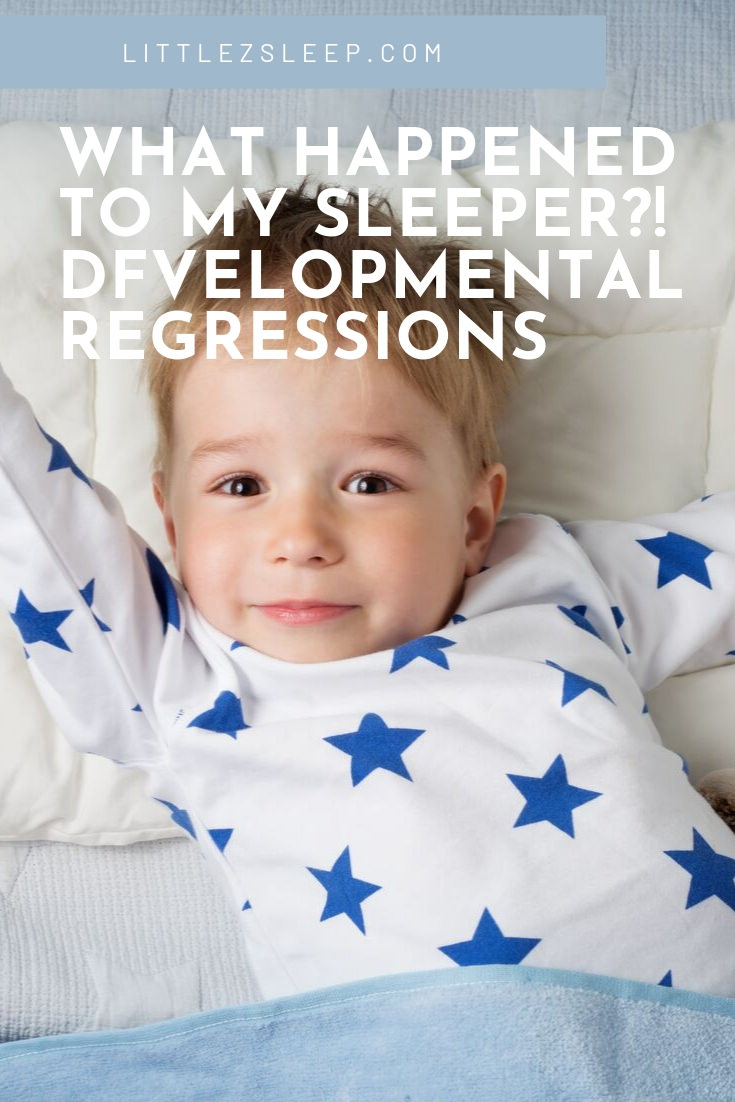
My little lady will be ONE next week.
Yikes!
That was the fastest year of my life. And definitely the most fun.
Currently we are dealing with a slow transition to one nap a day (RIP my morning solitude time) and also dealing with her ever near victory of walking! She’s like…right there! But not quite.
As you can imagine her temperament, nap length, and appetite are SO random. She’s happy one moment, and then a nano-second later she’s whining with her newly learned stank face. Her once glorious two hour naps are now dwindling down to an hour and 15 minutes….and she’s fighting the afternoon nap HARD.
The normal Mom inside me is simply going nuts over these changes that literally came over night. Then the Sleep Consultant within me sees that this is all so normal…and expected, as our littles go through developmental changes that affect their brain, bodies, and sleep.
What is a Developmental Milestone?
According to the CDC, a Developmental Milestone is something most children can do by a certain age. Skills like taking a first step, smiling for the first time, and waving “bye bye” are called developmental milestones. Children reach milestones in how they play, learn, speak, behave, and move (crawling, walking, etc.).
When do these Milestones happen?
Major milestones occur at: 2 months, 4 months, 6 months, 9 months, 1 year, 18 months, 2 years, 3 years, 4 years, and 5 years.
Lately the worst advice I’ve been given is to knock my little girl over when she tries to walk or stand. Bless those people. They mean well? But why in the world would I stop my daughter from reaching a milestone?! I know this might sound a bit bizarre, but I want her to walk! I don’t want a crawler or boot-scooter for the rest of my life! I want a kid who can run, jump, skip and hop!
Even if it means I’ll have to reinforce her beautiful sleep habits, I embrace these milestones as a sign of healthy growth.
What’s the deal with milestones and sleep?
If you’re dealing with a sleep regression due to a developmental milestone, know that:
1) It’s not going to last forever, and
2) your little one’s brain and body are literally “sorting through” this new skill
For some babies who are learning to stand, their sleep regression might mean they spend up to an hour at bedtime standing up and plopping down in their crib. For a toddler, it could mean they are testing the boundaries of bedtime rules because they realize…they can test you!
How do I get my little one back on track?
If your little one was already enjoying a full night of healthy sleep (11-12 hours) you can expect them to get back to this norm pretty soon. To make sure it comes even sooner, the number one thing to remember is to BE CONSISTENT!
Do not go changing nap times or bedtimes because they don’t seem tired or ask you for more play time. Stick with their schedule, their routines, and your sleep expectations. This consistency will make them feel safe in a time when their little bodies are changing, and will help them remember what is expected of them in the first place! Once they have mastered this skill…or at least, understand how to do it…they’ll be right back in line.
So now what?!
If you have more questions about your child’s sleep regression and would like help diagnosing how to solve their sleep, please contact me!It would be my pleasure to help get your little one back on track.
Sweet Dreams,
Becca Campbell
Your Pediatric Sleep Consultant

Leave a Reply
FLASH SALE
ONE WEEK ONLY
Keep sleep a thing on vacation with the Little Z's Travel Guide!
Hi Becca!
I went through your E coaching program a couple months ago with my now 9 mo old son, and he’s sleeping great! Thank you! The problem now is that he is learning to pull himself up to standing, and he has been doing this sometimes at nap time in his crib. He just stands and cries! After 10-15 I go in and remind him it’s nap time and lay him down, but he usually gets up again and just keeps crying. Any tips? Thanks!